2nd half - key projects
1/58
There's no tags or description
Looks like no tags are added yet.
Name | Mastery | Learn | Test | Matching | Spaced |
|---|
No study sessions yet.
59 Terms
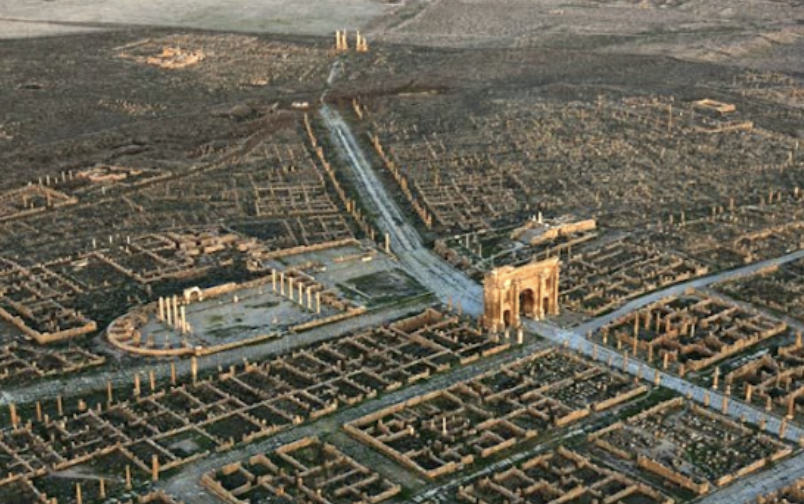
Timgad, Algeria, Roman Empire, founded 100CE, city
very good grid system
forum built at the intersections of roads
all roman cities were very standardized so anyone from other cities could easily navigate them
decimanus and cardo were the names of the two main roads
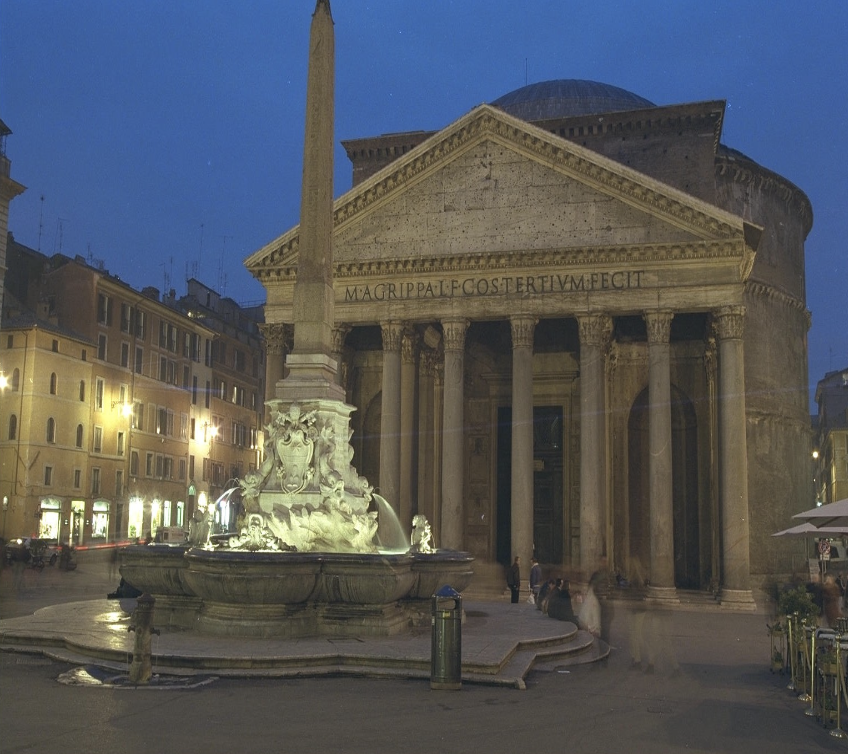
Pantheon; Apollodorus of Damascus; Rome, Italy; Roman Empire; 117-125 AD, Temple
temple to all of the gods (the entire pantheon of gods) —> each god has a statue and alter within this temple
the current pantheon was rebuilt slightly later by Marcus Agripa —> he added marble, brick, and concrete
plain exterior with a temple fortico facade
large, unreinforced concrete dome with extensive painting on the inside
natural light from the oculos
corintian columns

Hadrian’s Villa; Tivoli, Italy; Roman Empire; 125-128 CE; Villa/Palace
casinos, private stadiums, private gardens
imperial palace
visiting chambers
stables
baths
Serapeum (dome to the Egyptian gods)
Maritime Theater —> relaxation

Temple of Inscriptions; Chiapas, Mexico; Mayans (city of Palenque); 7th Century CE, Pyramid
tomb aspect
has inscriptions
large shoot/tunnel going underground to the sarcophagus
northside temple collapsed during construction
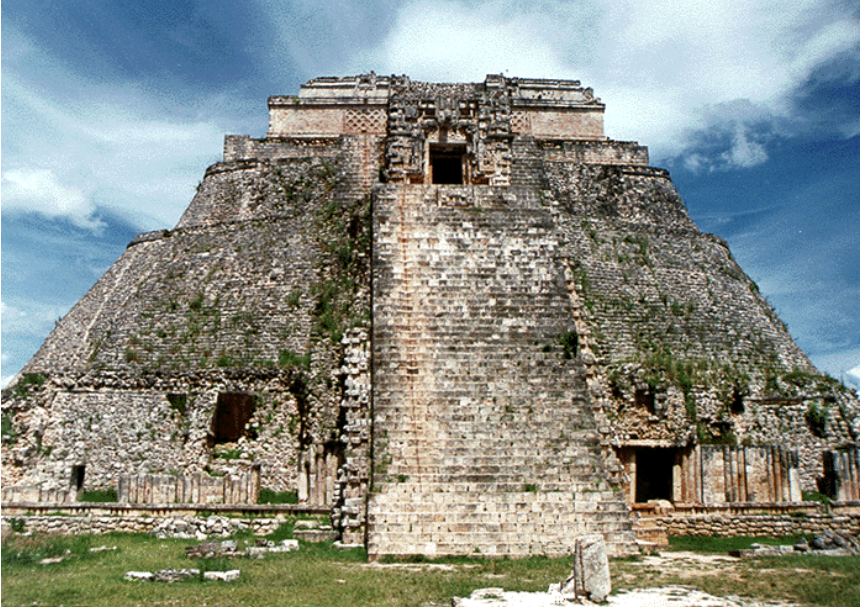
Pyramid of the Magician; Uxmal, Mexico; Mayans (city of Uxmal); 560-731 CE, Pyramid
something looks like the face of a magician
aligned with the Mayan calendar (like the sun sets in certain ways on certain days because of the doorway and stuff)
rounded sided
elliptical base
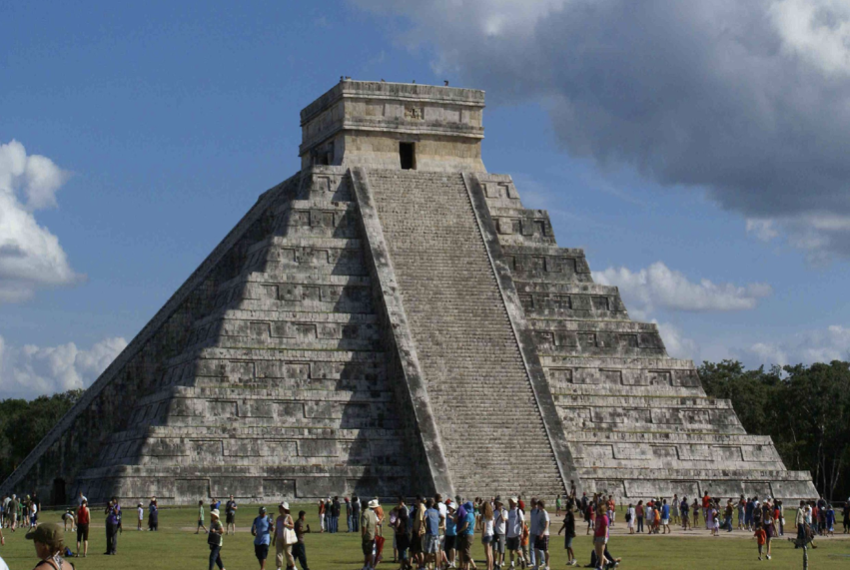
El Castillo; Yucatan, Mexico; Mayans (city of Chichen Itza); 8th-12th Century CE, Pyramid
stepped pyramid shape
four sets of stairs
each has 91 steps
all together is the number of days in the Mayan calendar
during the equinox, the shadows on the pyramids look like serpents
dedicated to Kukulkan (Mayan Serpent deity)
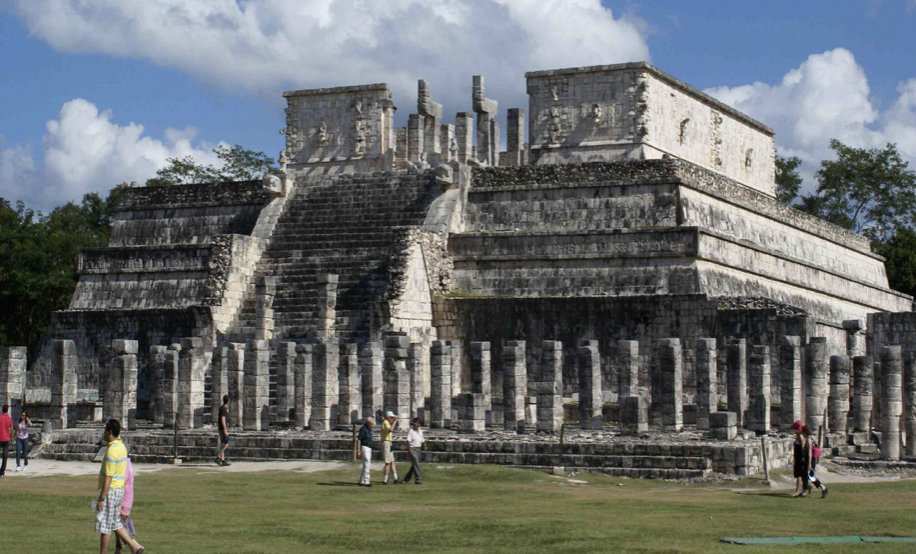
Temple of the Warriors; Yucatan, Mexico; Mayans (city of Chichen Itza); 8th-12th Century CE, Pyramid
four platforms
square columns
wide stairway leading up to it
reliefs depicted jaguars and eagles feasting on human hearts
probably a references to the human sacrifices at the temple
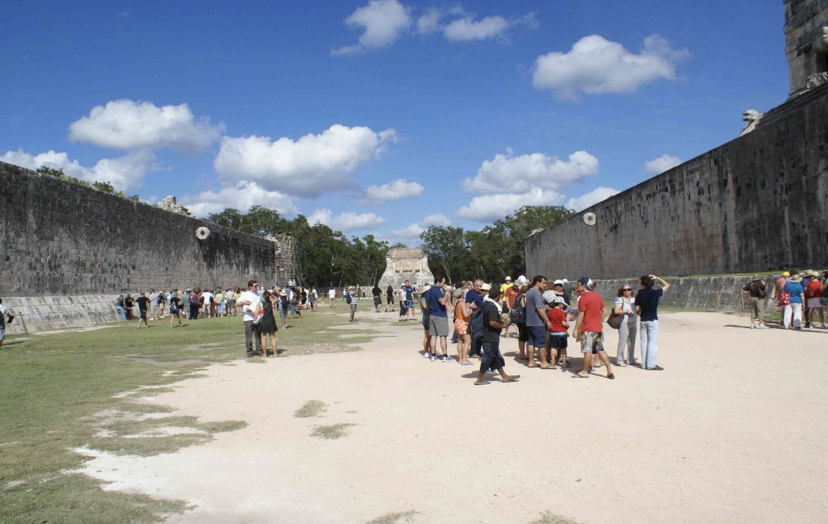
Great Ball Court; Yucatan, Mexico; Mayans (city of Chichen Itza); 8th-12th Century CE, Mayan Ball court
longer than a football field (massive)
slanted walls
goals are circular hoops at the tops of the wall
the game it was used for was sort of like basketball —> losers were sacrificed… (high stakes)
alter right by the stadium for the sacrifices
people watched from the top of the walls
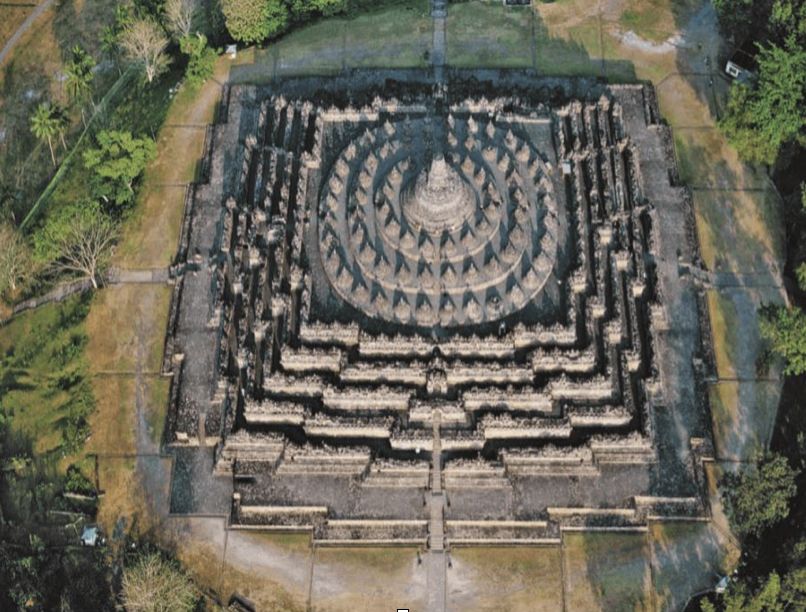
Borobudur; Central Java; Sailendra dynasty ; 800 CE, Temple
concentric succession of geometric figures
described as a mandala in 3D
stupas
8 segments, levels, etc. —> the 8 is significant in Buddism
relief carvings
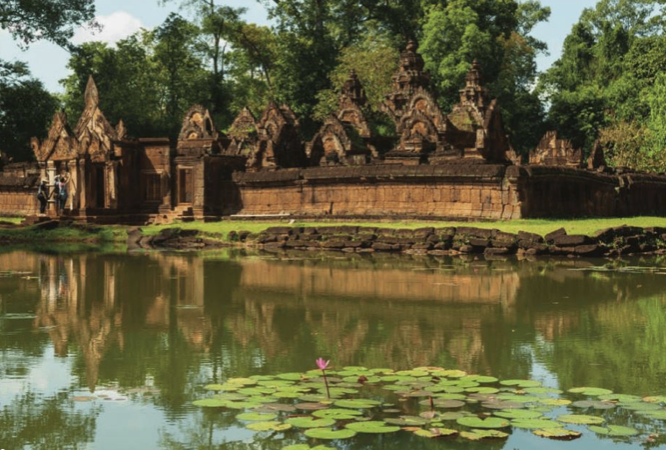
Banteay Srei; Siem Reap, Cambodia; Khmer Empire; 967 AD, Temple
only major temple at anchor not built by a monarch
shiva and vishnu
red sandstone
stone carvings
large pediments
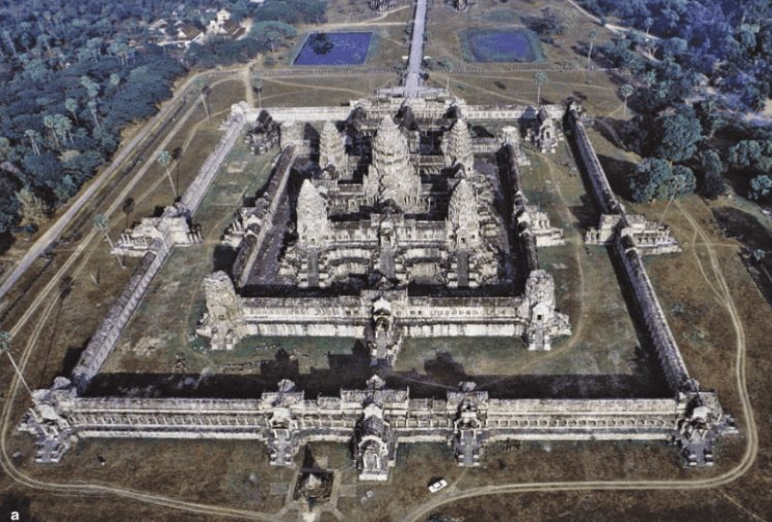
Angkor Wat; Siem Reap, Cambodia; Khmer Empire; 1150 AD, Temple Complex
oriented west
Vishnu
Hindu-Buddist temple
millions of sandstone blocks
enclosures get progressively smaller as you move through the terrace
temple is made of three rectangular gallaries
towers
represents the mountains of Mauru
recreate the mandala 3D, to reflect the geometric perfection of the world
basically everything is carved, covered in relief sculptures which tell stories
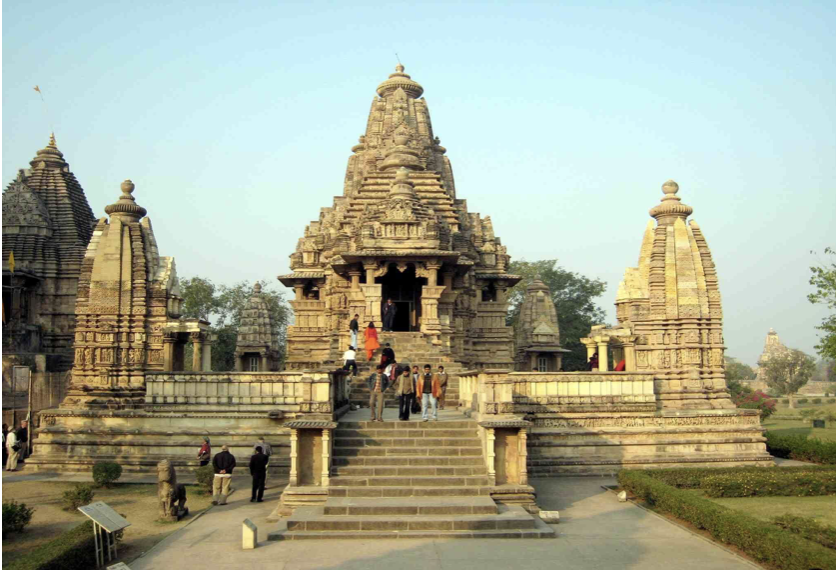
Lakshmana Temple; Khajuraho, India; Chandella dynasty; 930-950 CE, Temple
pawns were there first and they build the temples around the pawns
axial sequence on a double transcend
geometric
axial relationship to its pool and the other temples
the laksmana was first and so it established the style and type that would be used for the other temples in the complex
erotic sculptures
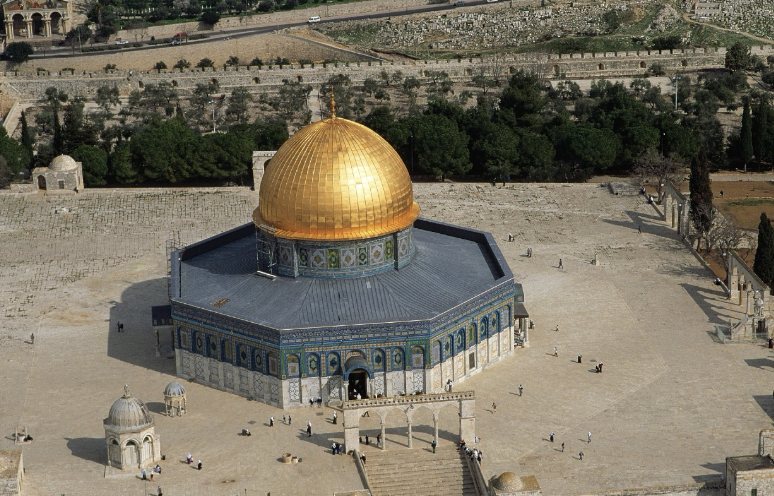
Dome of the Rock; Jerusalem; Ummayads; 687-692 CE, Monument
very important to Judaism, Christianity, and Islam
octagonal base
elevated dome sat on a secondary smaller platform
open interior
pillars around the interior
no religious services (not a mosque)
text not images
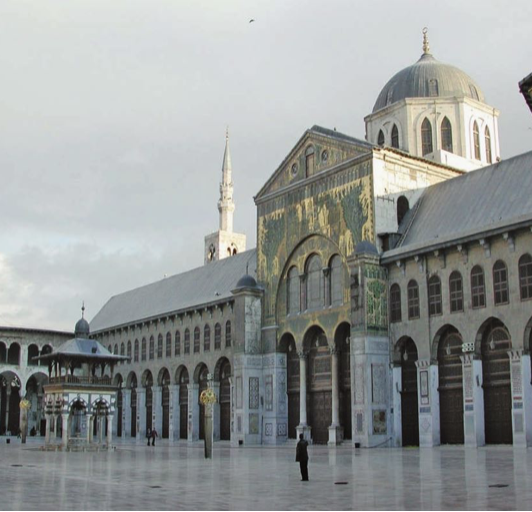
Great Mosque of Damascus; Damascus, Syria; Ummayads; 715 CE, Mosque
round arches on the arcade
pointed arches on the dome
large open courtyard
prayer hall with columns and arches
mosaics
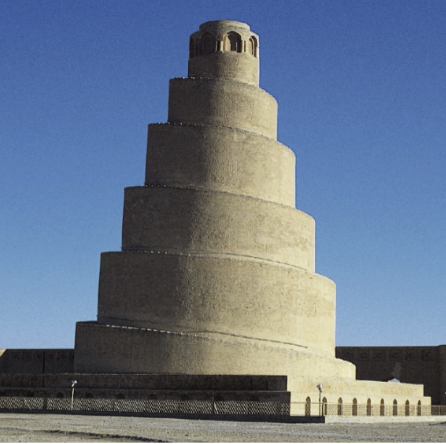
Malwiya minaret; Samarra, Iraq; Abbasids; 848-852 CE, minaret
Part of a temple with a courtyard, hypostyle prayer hall
Minaret - sandstone
similar to a ziggurat
Gradual slope

Great Mosque of Cordoba; Cordoba, Spain; Ummayads; 785 CE, Mosque
hypostyle prayer hall
Double arches made of a horseshoe arch with a normal arch on top
Aesthetic
Exterior has arches and things that aren’t for structure just for decor
Mirab dome made of layers and layers of arches
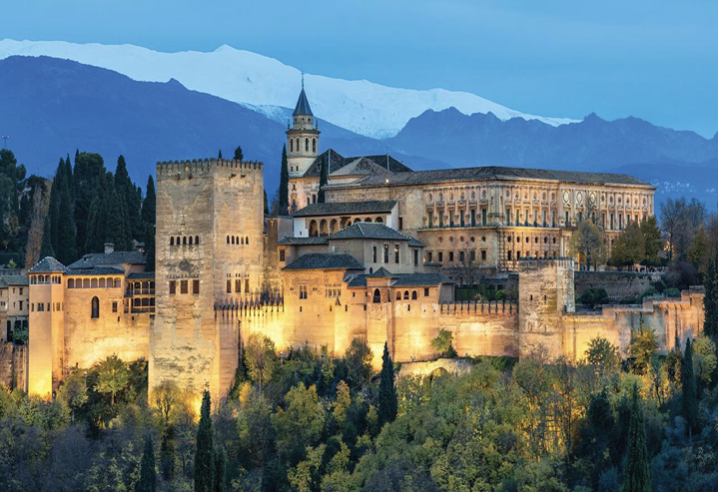
Alhambra; Granada, Spain; Nasrids; 1354-1391, Palace.
many rulers added to it during their reign
can support 10,000 people at once (large compound)
defensive structure
thick walls
towers with small windows for shooting through
smooth walls so no one could climb them
housed the elites
many courtyards and houses because each generation added onto it
looks more uniform on the outside but inside it various different areas
each court used different columns and designs
dome with a clerestory —> a level of the dome thats mostly windows
this was a new innovation at the time this palace was build which shows that these people were with the times
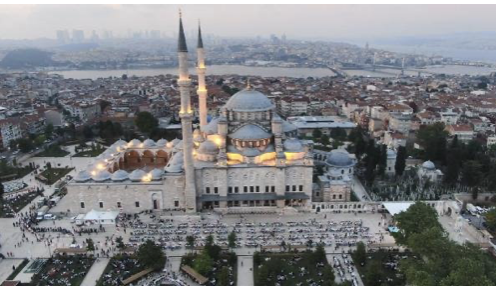
Fatih Cami, Istanbul, Turkey, Ottomans 1463, Mosque
the majority of the city was completely unorganized but the mosques were very symmetrical and organized so they stood out
this was a political statement built on top of a tomb and church
made of reused barrel vaults from the Romans (Roman concrete)
massive dome
square plaza with a food bank and hospitals
minarets (very thin, very tall towers, used for the call to prayer)
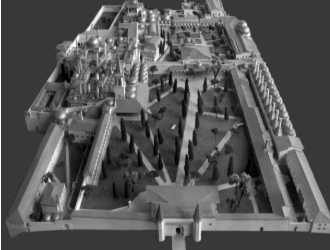
Topkapi Saray; Istanbul, Turkey; Ottomans; 1480-1560, Palace
has an asymetrical layout
multiple paths you can take throughout the building
it is made of three courts which were expanded on over time
1st court
the sultan would meet people here
2nd and 3rd court
private space for the sultan and his family
past the middle gate
herem
children who were taken from conquered areas were educated here
the girls went to the brothel in the herem (trained in sexual activities)
the boys were the sultans advisors
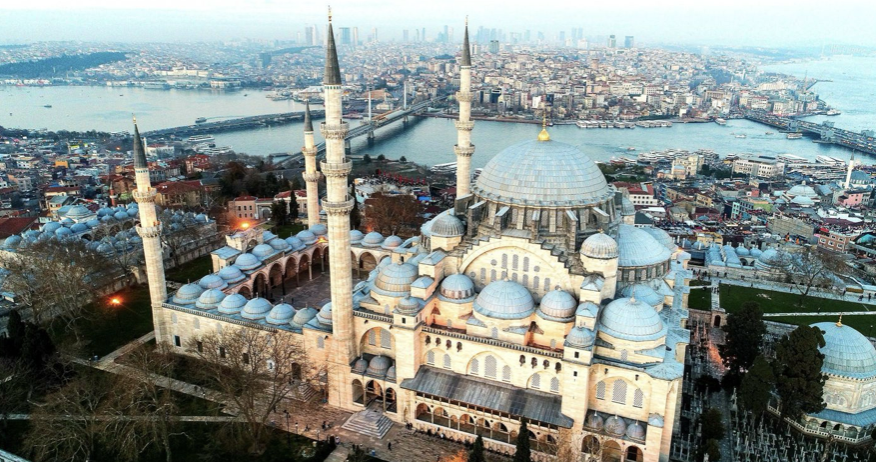
Suleymaniye Mosque; Mimar Sinan; Istanbul, Turkey; Ottomans; 1550-1557, Mosque
smaller domes hold up the larger dome
center of learning of the ottoman empire
tombs inside?
his tomb was in the direction of mecca and so everyone praying in the direction of mecca in turn prays towards him
large space to fit as many people as possible
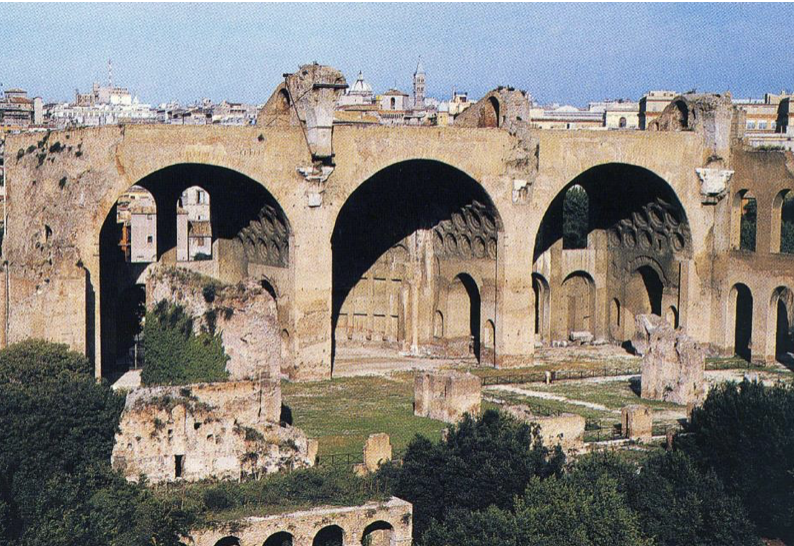
Basilica Maxentius; Rome, Italy; Romans; 306-312 CE, Basilica
thick walls
barrel vaults
statues in niches
massive arches
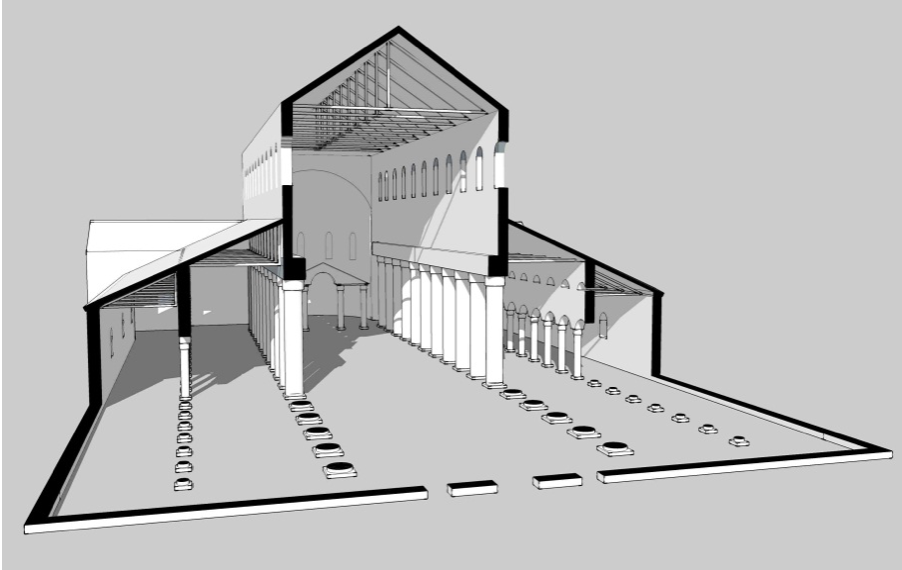
St John’s in the Lateran; Rome, Italy; Romans; ca. 324 CA, Early Church
built as a church
depictions of jesus along facade
octagonal baptistery
2 story portico
marble columns, mosaics
choir space
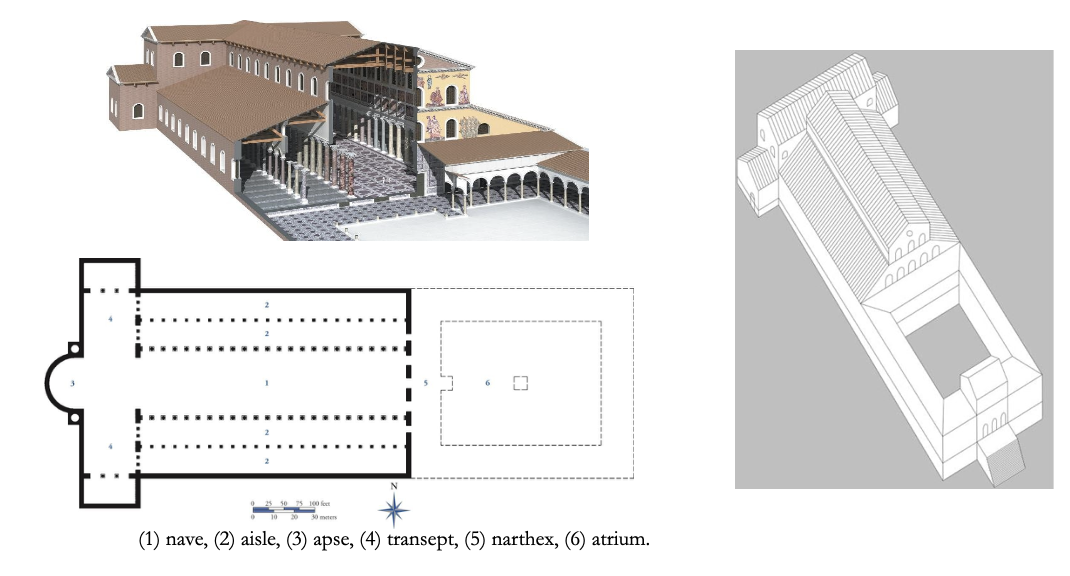
Old St Peter’s; Rome, Italy; Romans; ca. 319, Early Church
church type is based on the typology of a basilica so it can be a large gathering place
build over the grave of the first Pope Saint Peter
nave, aisles, apse, transept, narthex, atrium
Greek style —> transept is crossing
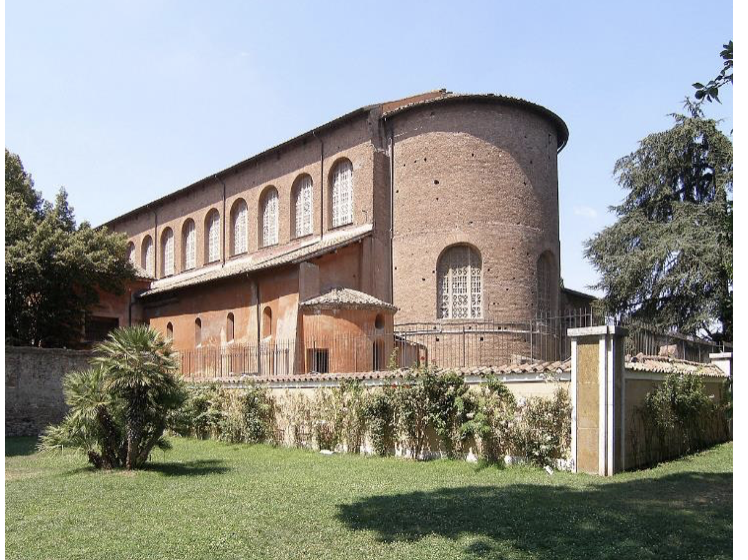
Santa Sabina; Rome, Italy; Romans; 422–432, Early Church
austere exterior (simple) so that you don’t stand outside and look at it, but so you have to come inside to see the opulence
clerestory windows
colonnade —> leads the eye to the apse
corinthian columns
side chapels —> relics and alters
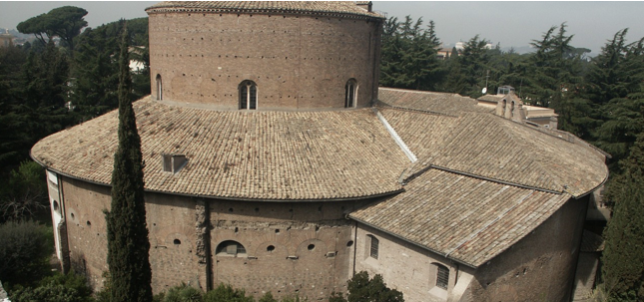
Santo Stefano Rotundo; Rome, Italy; Romans; ca. 463-483, Early Church
circular church structure
centralized church —> alter in the center rather than at the back, congregation around the alter
unfinished
round collonade
ceiling above the alter is higher

Santa Costanza; Rome, Italy; Romans; ca. 337–351, Early Church
Mausoleum for constantine's daughter
Not being used as this and becomes a church
Has a dome
Bland brick exterior, more decorated interior
Mosaic walls
Central focus on alter
Colonnade surrounding the altar
Brings focus to the altar
Only light coming straight down onto alter
Everyone else kind of in darkness
Pretty small in size
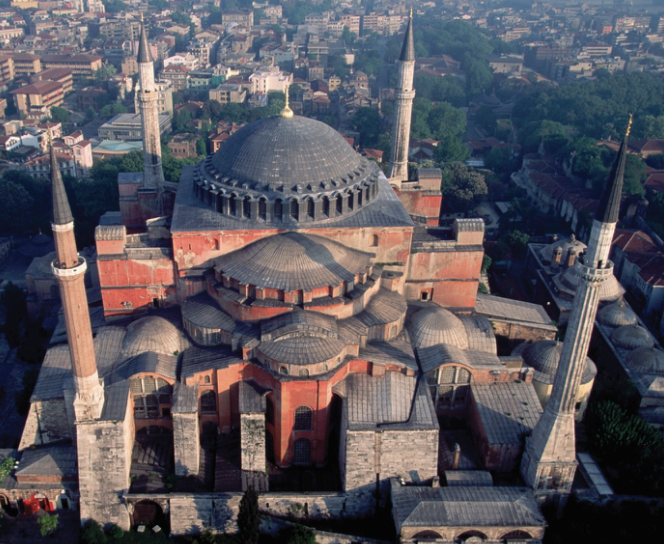
Key Project: Hagia Sophia; Istanbul, Turkey; Anthemius of Tralles and Isidorus of Miletus; Byzantines; ca. 532-537 CE, Mosque/Church
Turned into a mosque
Huge main dome, Half domes as well
Domes on top of squares
Built using pendentive
Very stable structural shape → able to add lots of windows
Allows walls to bear less of the pressure → more windows
Kind of like a groin vault
Very well lit but points of semi darkness
Dome over the nave (NOT ALTER)
Alter not centralized but it feels centralized when you are in the space
Gold
Sun reflects off of the gold
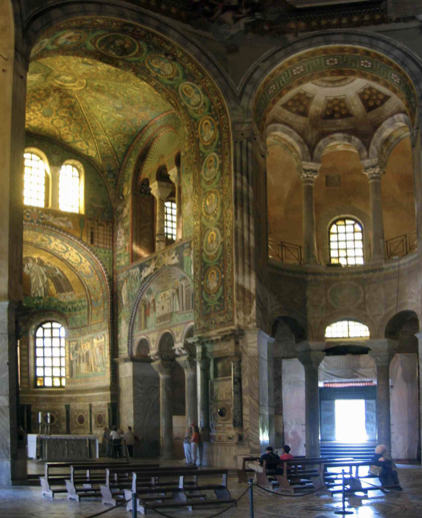
San Vitale; Ravenna, Italy; Romans 526–547 CE, Early Church
Dedicated to & burial space of san vitales
Built as a centralized church but in practice as a linear church
Apse structure in the building but everything else shows it a centralized
Clerestory dome and lots of windows
Church and state connection
Mosaic showing emperor of state having a religious halo (reserved for saints)
Persists with bibles and soldiers with weapons
Emperors closeness with bishop
Right to rule from god
Right where central communion happens
Abbey Church of Saint-Denis; Saint-Denis, France; French (Normans); 1135–1140, Cathedral .
Rose Window
First to embrace gothic style
Colonade
arches for structure
Key Project: Chartres Cathedral; Chartres, France; French (Normans); ca. 1145-1155, Cathedral
Extra windows
Taking the gothic style to the next level
Octagon shape flower shaped windows → with masonry (at this point)
Rectangular base
Elongate the church
Bishops palace, Fortified enclave, free hospital care around it
Three portals
Key Project: Notre-Dame, Paris, France, French (Normans), ca. 1163–1200, Cathedral
Well built → still standing
Building weight taken to the outside
Brick and copper roof
Copper burned
85% of building remained in tact after 10 hrs of burning
50 years to build
3 rose windows
2 bell towers
Massive spire
Gargoyles
Ward off spirits
Key Project: Reims Cathedral; Reims, France; Normans; ca. 1225–1290, Cathedral
Increasing visual complexity
Want you to be impressed
Awe-inspiring
More looks nova
More and more windows/glass make it lighter
Less masonry in the flower window than before
More light more height
Key Project: Hall of the cloth guild; Bruges, Belgium; Normans; 1230, Guild Hall
Guildhall of clockmakers
Craftsmen organizing into groups
used as a marketpoace/ commercial hall
Able to practice their craft
Establish rules
Spread knowledge of the craft
Guilds are private → limit members, practice secrets
New typology combining things they like and see from other architecture
Taller tower = more importance
People don’t have personal watches so communal clock
used to be bells controlled by the church but now a clock —> took a little power from the church
Key Project: Salisbury Cathedral; Salisbury, England; Normans; 1220-1330, Cathedral
Not as complex as french cathedrals
One single built unit
No 3D deck
Not as many flying buttresses used
Not as vertical
Unique tall central tower
Not many central towers elsewhere
Dual trancepts
Courtyard
Monastery or nunnery
Similar bare bone elements of french gothic cathedral
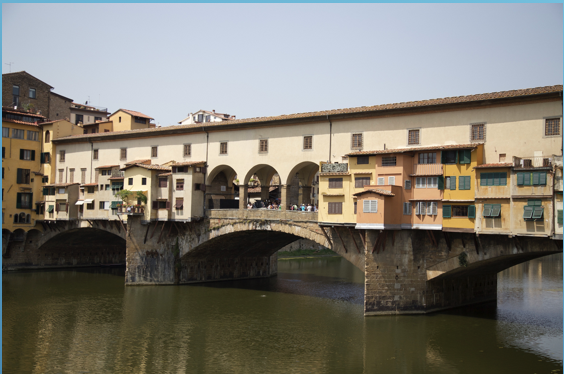
Ponte Vecchio; Neri di Fioravanti; Florence, Italy; 1340s, bridge
Bridge dedicated to shopping
Gov doubled the width of the bridge to ass more places for shops
Arches give it a monumental feel
Shop owners could add additional stories
Shop owner lives on top of shop
Opening with 3 arches
Symmetrical
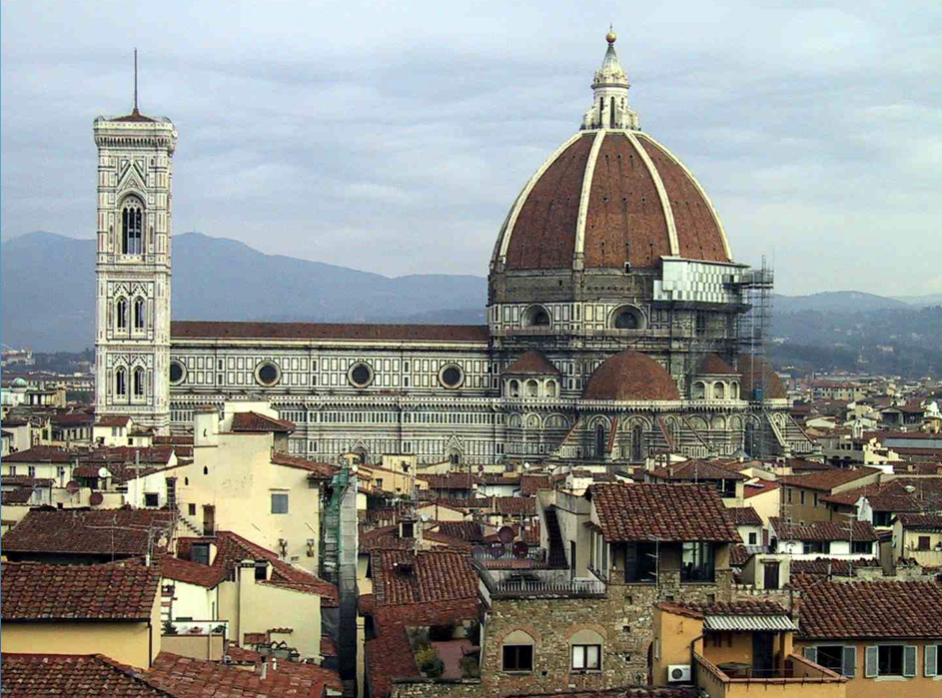
Cathedral of Santa Maria del Flore; Filippo Brunelleschi; Florence, Italy; 1296-1436, cathedral
massive dome (bigger than the pantheon)
built with brick, cut stone, and wood —> no concrete yet
interior ribbed shell, exterior dome
4 architects
1 responsible for just the dome
Dome bigger than the pantheon
Mimicking columns inside
triple nave
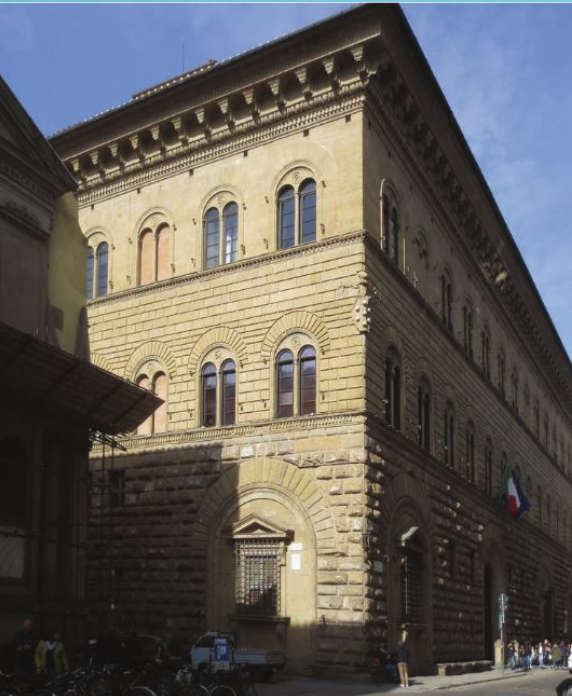
Palazzo Medici; Michelozzo; Florence, Italy; Florence (Medici family); 1440s, palazzo
Palazzo
First floor open to conduct business
Privating living areas upstairs
Merchants gaining wealth
Perfectly square courtyard replicating roman atrium houses
rustication —> rougher stone the lower you get
used to make them feel bigger
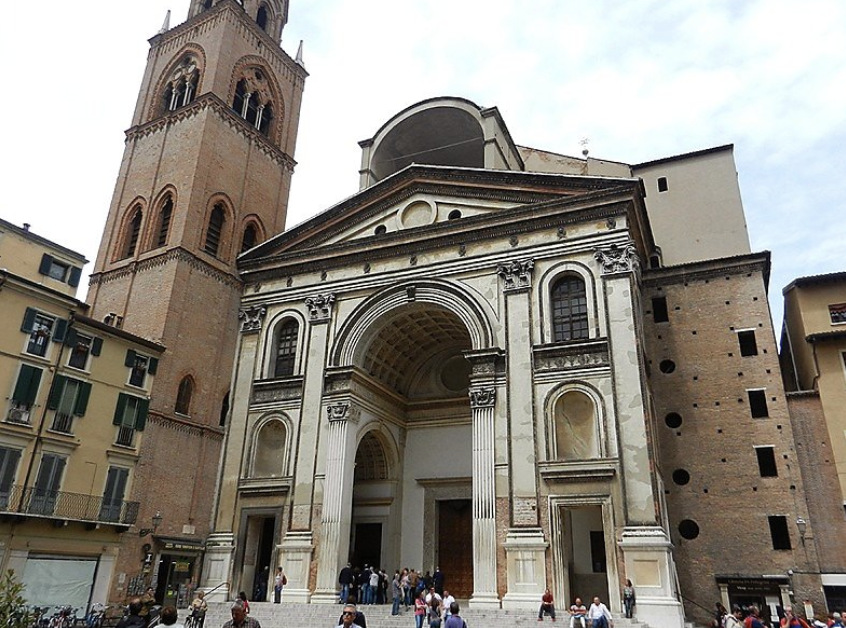
Basilica of Sant’Andrea; Leon Battista Alberti; Mantua, Italy; 1472-1790, church
Adding imagery of arches and columns
Inspired by romans
Colossal engaged fluted columns
Use of coppering → very reminiscent of roman period
Mathematically symmetrical
Heavily influenced by early basilicas
Very roman feel on the inside
nave with a massive barrel vault
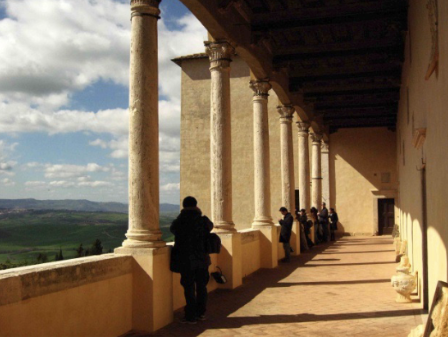
Pienza; Bernardo Rosselino; Siena, Italy; Papal States; 1459 (construction began), city
Destroyed housing and then built more for the people
humanism/ being guilted into giving back to the people
Ideal city
In city
Cathedral
Open square in front of cathedral
Bishops palace
public palaces (wealthy citizens)
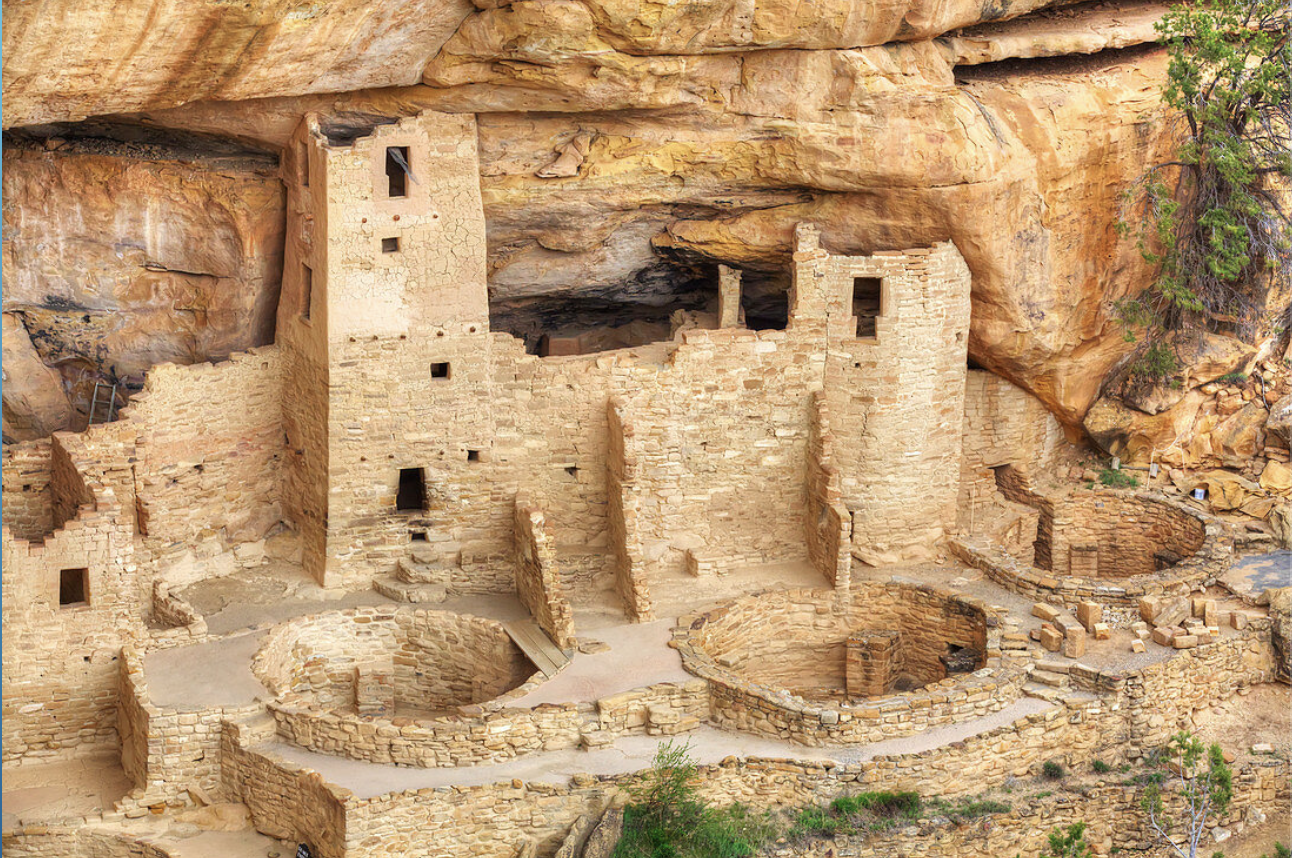
Cliff Palaces of Mesa Verde; Mesa Verde, Colorado; Ancestral Puebloans; 12th century; cliff city
Built with mud brick
Built into cliffs for natural defense
23 Kivas
200 orthagonal rooms
Kivas for ritual use (not homes)
Sunken circles
Ladder down a dark way
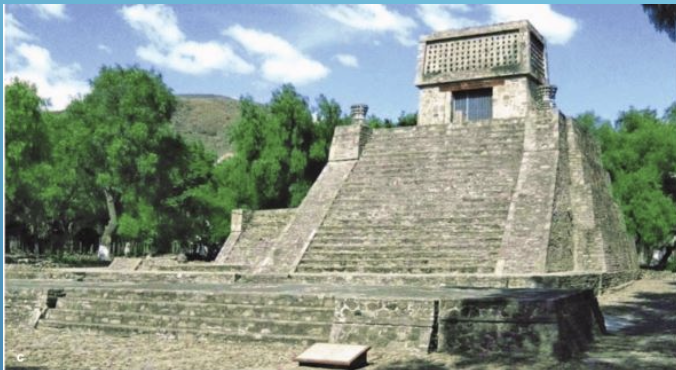
Templo Mayor; Mexico City (Tenochtitlan), Mexico; Aztecs; 1325; Temple
Pyramid sanctuary
Built at least 6 times
Build in core and then add facing
two shrines of the top of the pyramid (god of rain, god of war)
made of two stepped pyramids on a large platform
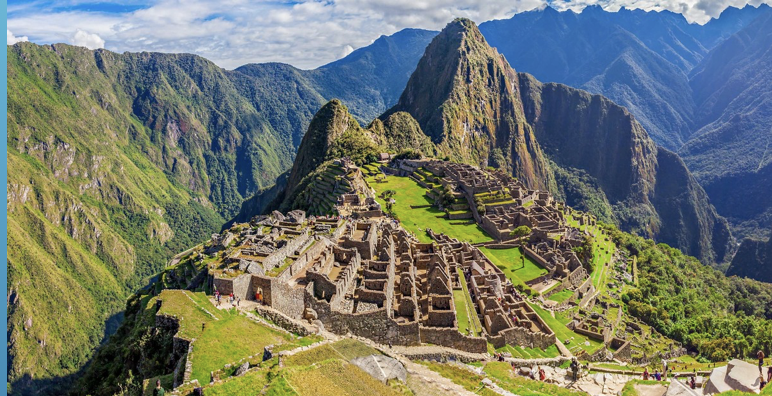
Machu Picchu; Cusco Region, Peru; Incas; 1450; royal resort/retreat
Limited visitors per day
Tough climb
Vacation town for royalty and elites
Only a small population could visit
Terraced rooms
143 buildings
Roughly cut stones
sundial/solar observatory
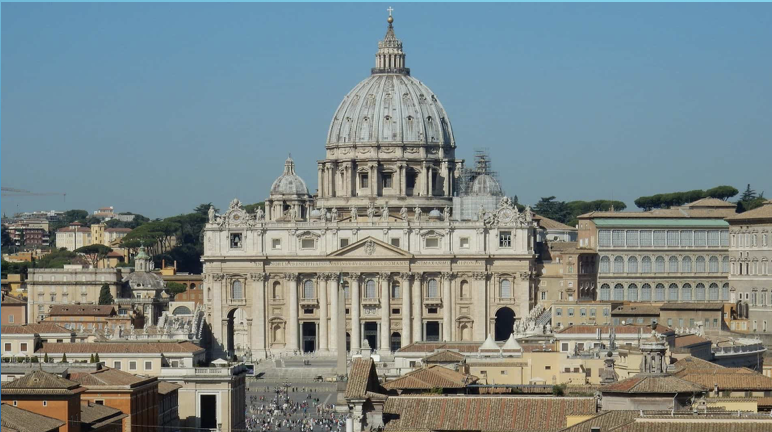
Saint Peter’s Basilica; Bramante, Michelangelo, Maderno; Vatican City (Rome, Italy); Papal States; 1507-1626; cathedral
Three architects
Each artisan architect added their own elements to the structure
Mixture of a lot of different things
Modified style similar to the pantheon
renaissance era sculptures on the inside
Baroque as well
Long floorboard
Dome is 400 ft
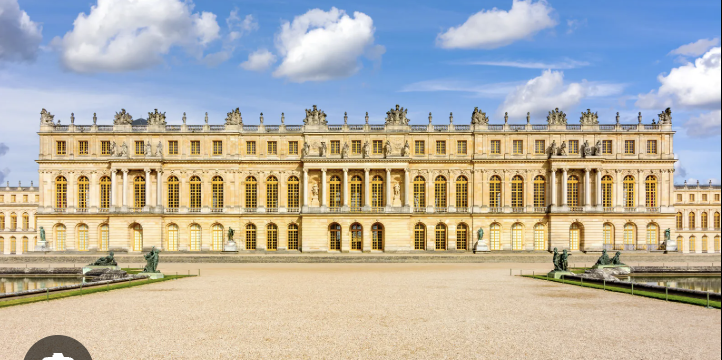
Palace of Versailles; Versailles, France; French; 1661
Palace home of louis the 14th
Built this massive palace
Egocentric
Forever terrified he’d be killed
Initially a hunting lodge
Just outside of paris
Didn't like leaving the palace
Ran the country from versaille (his bedroom) instead of going into palace
Private suites
king and queen suits
hall of mirrors
barrel vaults
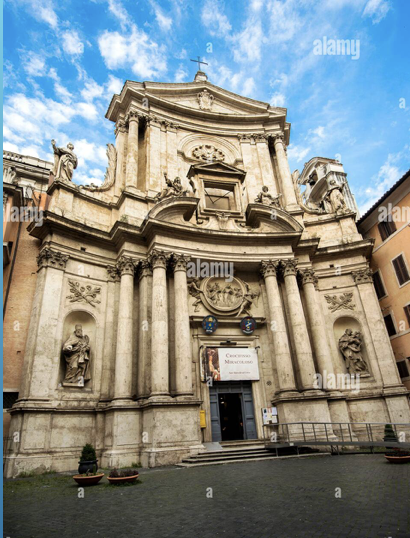
San Marcello al Corso; Rome, Italy; Carlo Fontana; Italians; 1670s ; church
at this point, rome was not as powerful of a place but still a center for art and architecture
theatrical
meant to be interacted with
broken pediment* key trait of Baroque architecture
sculptures
interior
meant to be an expression of the wealth and power of the catholic church, so it was super grand
covered in paintings
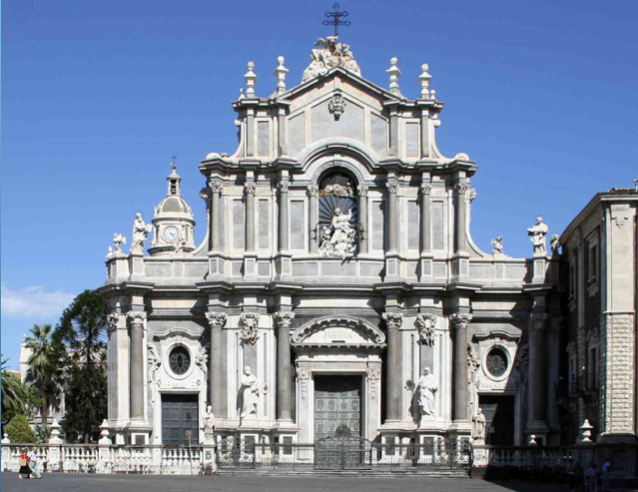
Duomo, Piazza del Duomo, Catania, Sicily, Giovanni Battista Vaccarini, 1736; church
sicily was orginally built very organically, but then there was a devestating earthquake that destroyed everything. they used this as an opportunity to built an ideal city —> thats when this was built
this facade is interesting because its meant to be viewed from all directions (most are beautiful from the front)
Baroque —> theatrical, engaging, a bunch of little details
columns that are kinda a mix of doric and corinthian and different on each level of the structure

Church of San Giorgio, Modica, Sicily, Rosario Gagliardi, 1740s; church
deliberated placed on a steep location so that the church would be elevated
convex stairs, bent inward
rose window
bell tower
alter
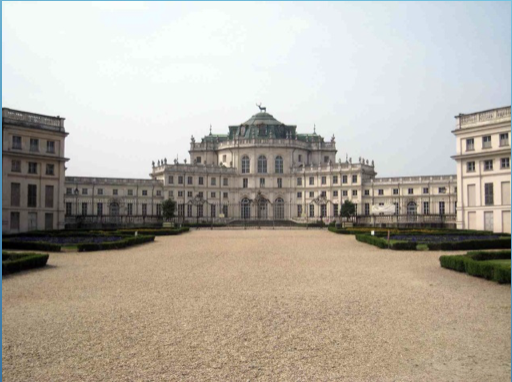
Palazzo Stupingi, Turin, Italy, Filippo Juvarra, 1720s; palace
built in sections
symetrical in terms of of the exterior and facade
137 rooms
31,000 sq meter
balconies
x shaped plan
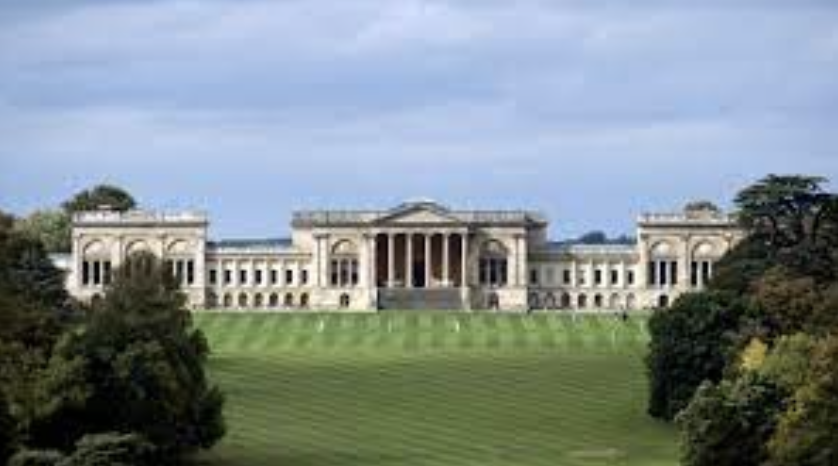
Stowe House and Gardens; Buckinghamshire, England; 1677-1779; Great House
Currently a coed boarding school
Famous for architecture and gardens
Laboratory for picture esq experimentation
Stop at certain points for views
Various follies and buildings and monuments within the gardens
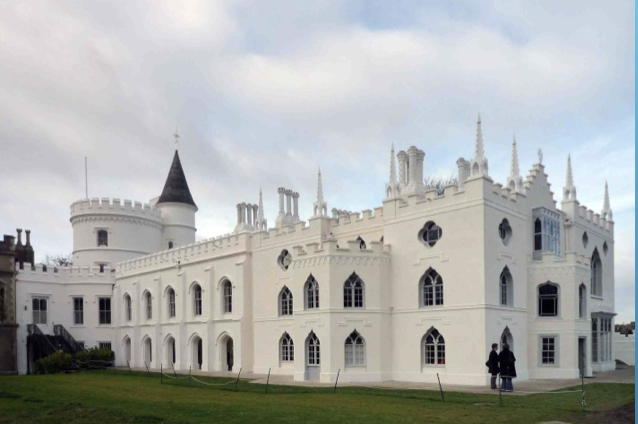
Strawberry Hill, Horace Walpole with Robert Adam, Twickenham, England. 1749-1780; Great House
Designed with elements of the landscape
Little gothic castle
Irregular layout
L shaped, with bays
Trying to get little surprise moments
No rooms have the same shape
Lots of decorative aspects
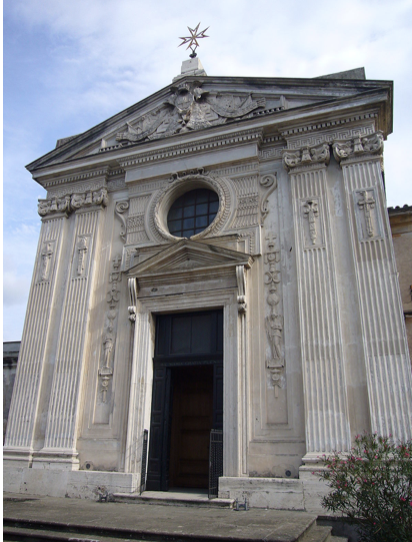
Santa Maria del Priorato, Piranesi, Rome, Italy, 1764-1766; church
Frieze has decorative design (not blank or story)
Pediment and pediment sculpture
No paintings
Rounded arches
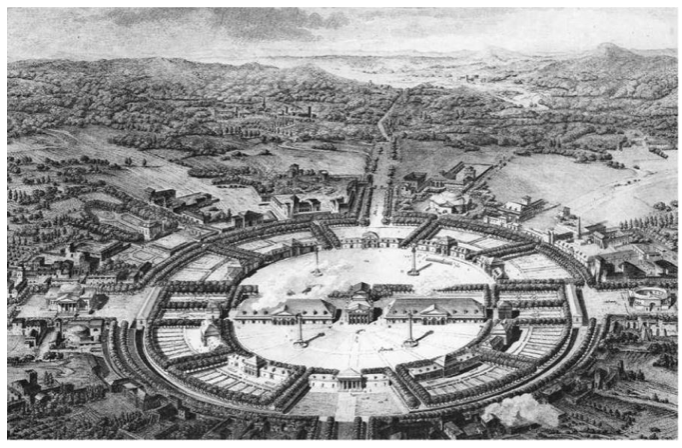
Key Project: Saline de Chaux, Ledoux, Chaux, France. 1770-1800; salt works
radial design —> constant survailence for the director over the worker
worker housing along the perimeter
center was housing for the directors
directors house was the tallest building in the complex (doric facade)
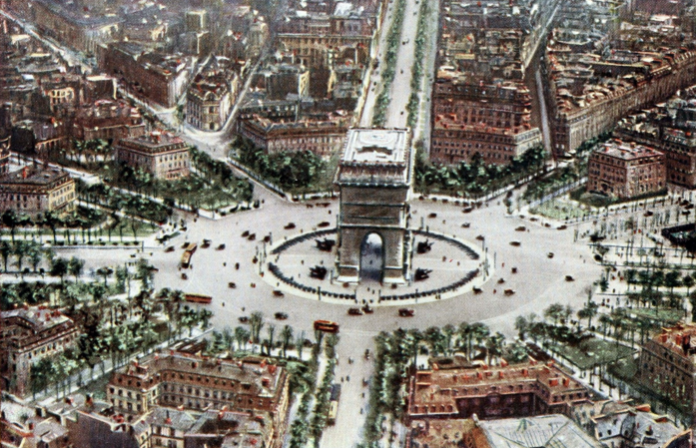
Key Project: Arc de Triomphe; Paris, France; Jean Chalgrin; 1806-1836; triumphal arch
commissioned after a war victory
names of generals inscribed on the arch
beneath the vault is the tomb of the unknown soldier
50 meters tall
vaulted arches on all sides
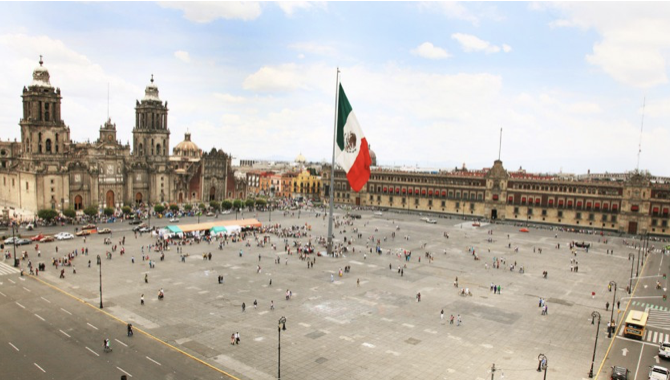
Key Project: Mexico City Cathedral, Mexico City, Mexico, Claudio di Arciniega, 1573-1813; cathedral
built in sections
gothic baroque and neoclassical
large public gathering place
bell towers
central dome
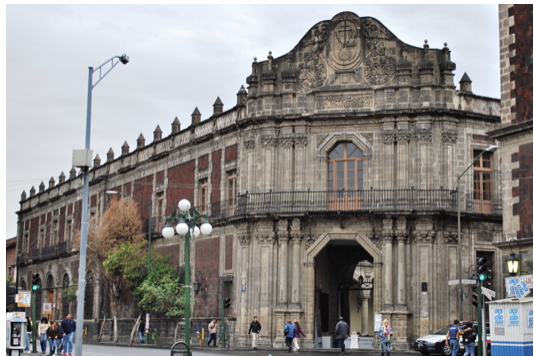
Key Project: Palace of the Inquisition, Mexico City, Mexico, Pedro di Arrieta, 1710s; administrative building
double height patio type palace for the government
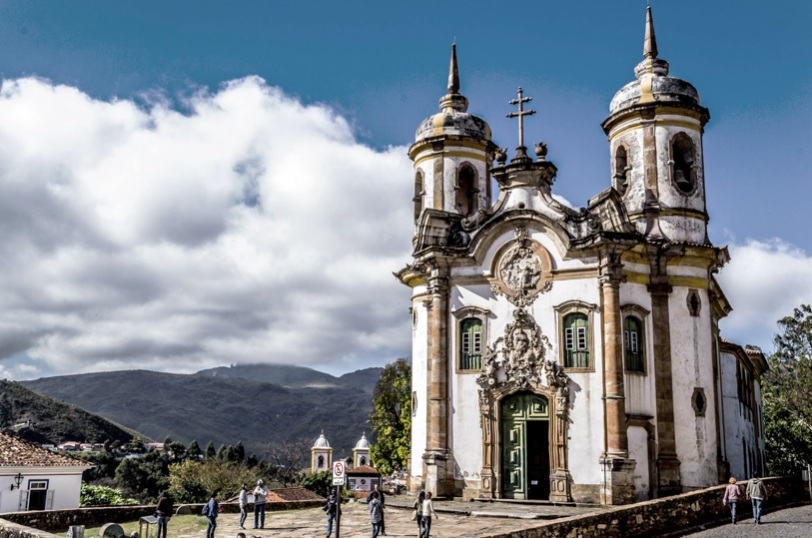
Key Project: San Francisco Church, Ouro Preto, Brazil, Aleijadinoh, 1766; church
no transepts
single line
ambulatory space
choir space
alter space
broken pediment
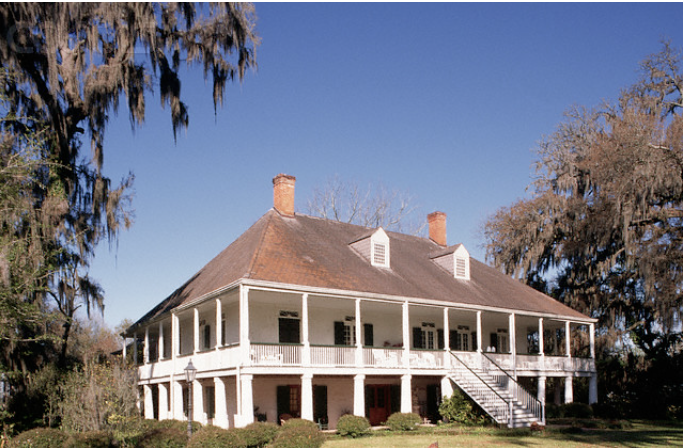
Key Project: Parlange Plantation House, Mix, Louisiana, 1750; great house
entrance to the house is on the second floor
colonnaded veranda
french collonial style
plaster
spaces for both family and working slaves
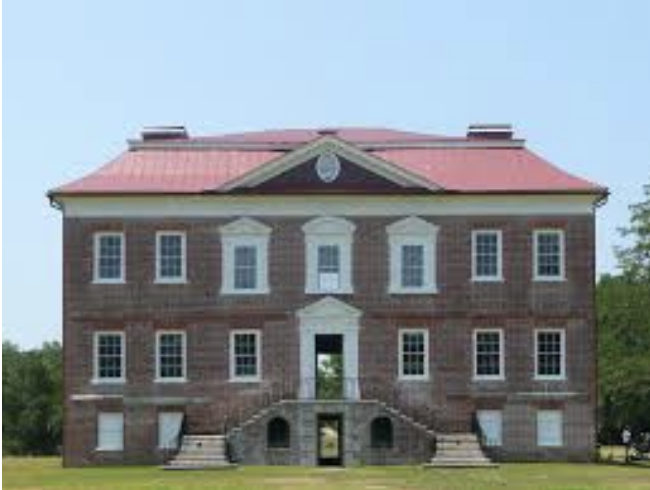
Key Project: Drayton Hall, Charleston, South Carolina; 1747-1752; great house
7 bay (windows) house
large central staircase
two stories
basement
split staircase
pedimented windows
symetrical